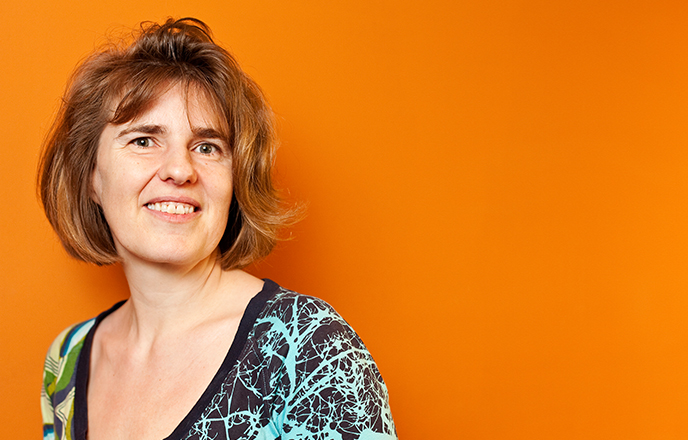‘You’ll never know until you try’

Katja Conrathis responsible for the discovery and development of new drugs to treat CF
Katja Conrath (42) is mother to a son aged 4 and a daughter aged 8. At one time, she wanted to study space technology. In the end, however, she swapped the infinitely large for the microscopically small. Since joining Galapagos ten years ago, she has been responsible for the discovery and development of candidate drugs to treat cystic fibrosis.
“A scientist asks questions, seeks answers and is constantly learning. A scientist never gives up. I am not an inventor, I am a problem solver. There is always a starting point, such as an assay which emulates the target disease. I like to look at the process from all directions, finding alternative ways to analyze and measure a function or activity. The biology of proteins and cells is already very challenging and the extra layer of complexity that disease brings makes this a very exciting area of study. CF is a prime example. I derive much satisfaction from trying to identify and counteract the defect which drives the disease. Understanding and changing the cell assays, looking for alternatives, not taking data for granted: that’s how we have come this far.
At Galapagos we are all very committed to our work. Perhaps because we know that we can really make a difference.
In recent years, collaboration with other researchers and organizations has become an increasingly important aspect of my work. At Galapagos our motto is ‘Go for it!’ We try new routes all the time, since you never know until you try. Given this context, it was quite a challenge to achieve the desired results within the agreed timeframe and to lead the team rather than become a mere member of it.
One thing that can be said of everyone at Galapagos is that we are all very committed to our work. Perhaps that is because we know that we can really make a difference. A scientist here is given a high degree of autonomy. We can do whatever we feel appropriate. No one is there to say no, and there is plenty of opportunity to learn and develop. I became involved in the CF project almost by accident. I gradually got into the swing of things and could work at my own pace, but always with one eye on the deadlines of course. There is still a lot of work to be done before we completely understand our molecules and the molecular effects of the disease in depth, but we have come a long way.”
